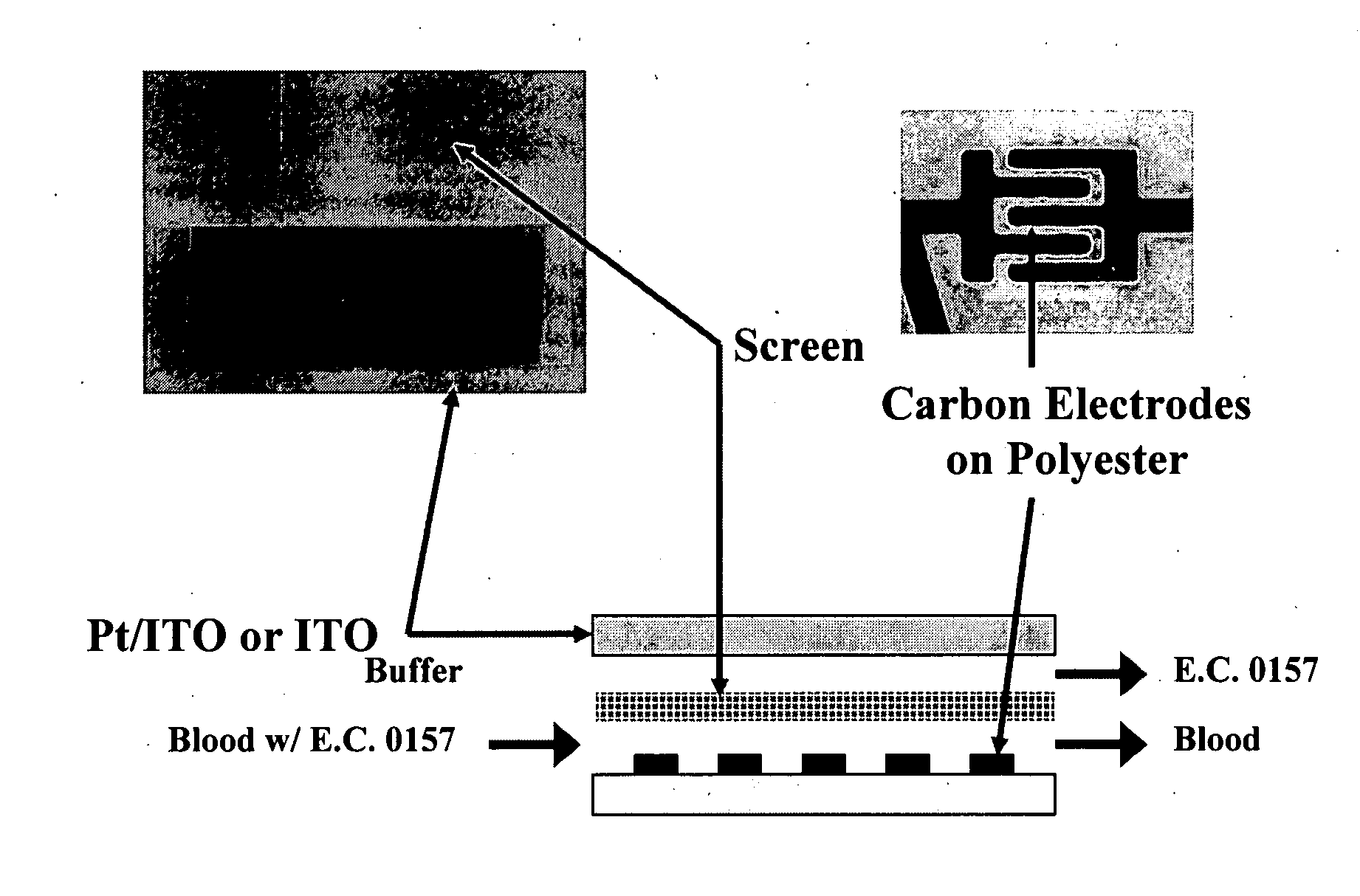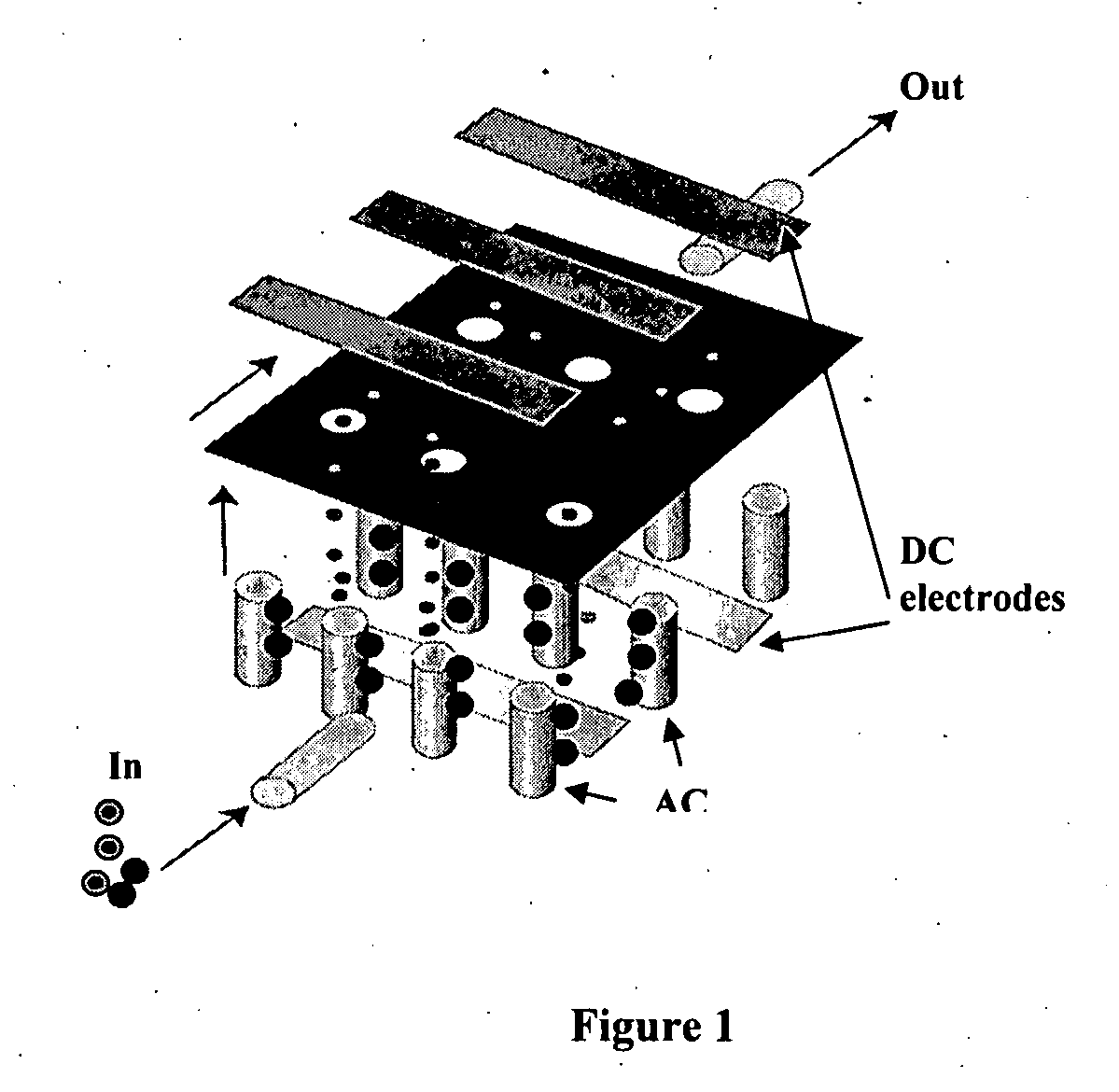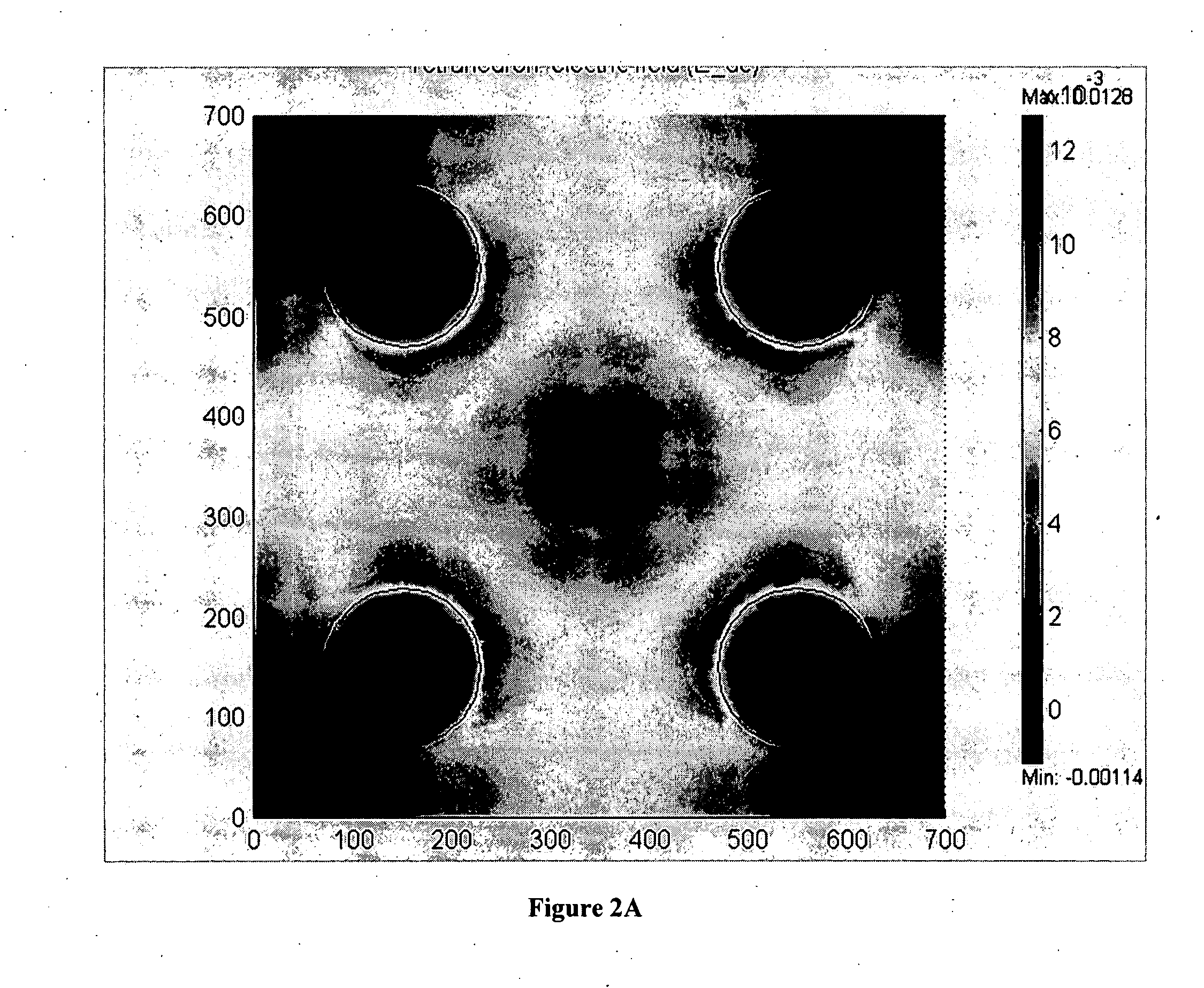Three dimensional dielectrophoretic separator and methods of use
a dielectrophoretic separator and three-dimensional technology, applied in the direction of fluid pressure measurement, liquid/fluent solid measurement, peptide, etc., can solve the problems of thermal convection disturbance, thermal convection pushing off, and the separation of unseparated cells is difficult to achieve, so as to minimize the non-specific adhesion of cells and achieve the separation of desired cells. uniform, the effect of extending the dielectrophoretic for
- Summary
- Abstract
- Description
- Claims
- Application Information
AI Technical Summary
Benefits of technology
Problems solved by technology
Method used
Image
Examples
Embodiment Construction
[0048] The present invention comprises devices and methods for performing separation of cell particles by three-dimensional dielectrophoresis, which can be conducted on a single bioelectronic chip.
[0049] The basic theory of dielectrophoresis, motion of particles with induced polarization under non-uniform electric field, has been extensively studied. See, e.g., R. Pethig, “Dielectrophoresis: Using Inhomogeneous AC Electrical Fields To Separate and Manipulate Cells”, Crit. Rev. Biotech, 16:331-48 (1996); X. Wang, et al., “A Unified Theory of Dielectrophoresis and Travelling Wave Dielectrophoresis”, J. Phys. D: Appl. Phys., 27:1571-74 (1994); G. Fuhr, “Cell Manipulation and Cultivation Under AC Electric Field Influence in Highly Conductive Culture Media”, Biochim. Biophys. Acta 1158:40-46 (1993); and M. Washizu, “Molecular Dielectrophoresis of Biopolymers”, IEEE Trans. Industry Applicat. 30:835-43 (1994). The dielectrophoresis phenomenon can be generally described by energy potential...
PUM
| Property | Measurement | Unit |
|---|---|---|
| Volume | aaaaa | aaaaa |
| Volume | aaaaa | aaaaa |
| Electric potential / voltage | aaaaa | aaaaa |
Abstract
Description
Claims
Application Information
 Login to View More
Login to View More - R&D
- Intellectual Property
- Life Sciences
- Materials
- Tech Scout
- Unparalleled Data Quality
- Higher Quality Content
- 60% Fewer Hallucinations
Browse by: Latest US Patents, China's latest patents, Technical Efficacy Thesaurus, Application Domain, Technology Topic, Popular Technical Reports.
© 2025 PatSnap. All rights reserved.Legal|Privacy policy|Modern Slavery Act Transparency Statement|Sitemap|About US| Contact US: help@patsnap.com



